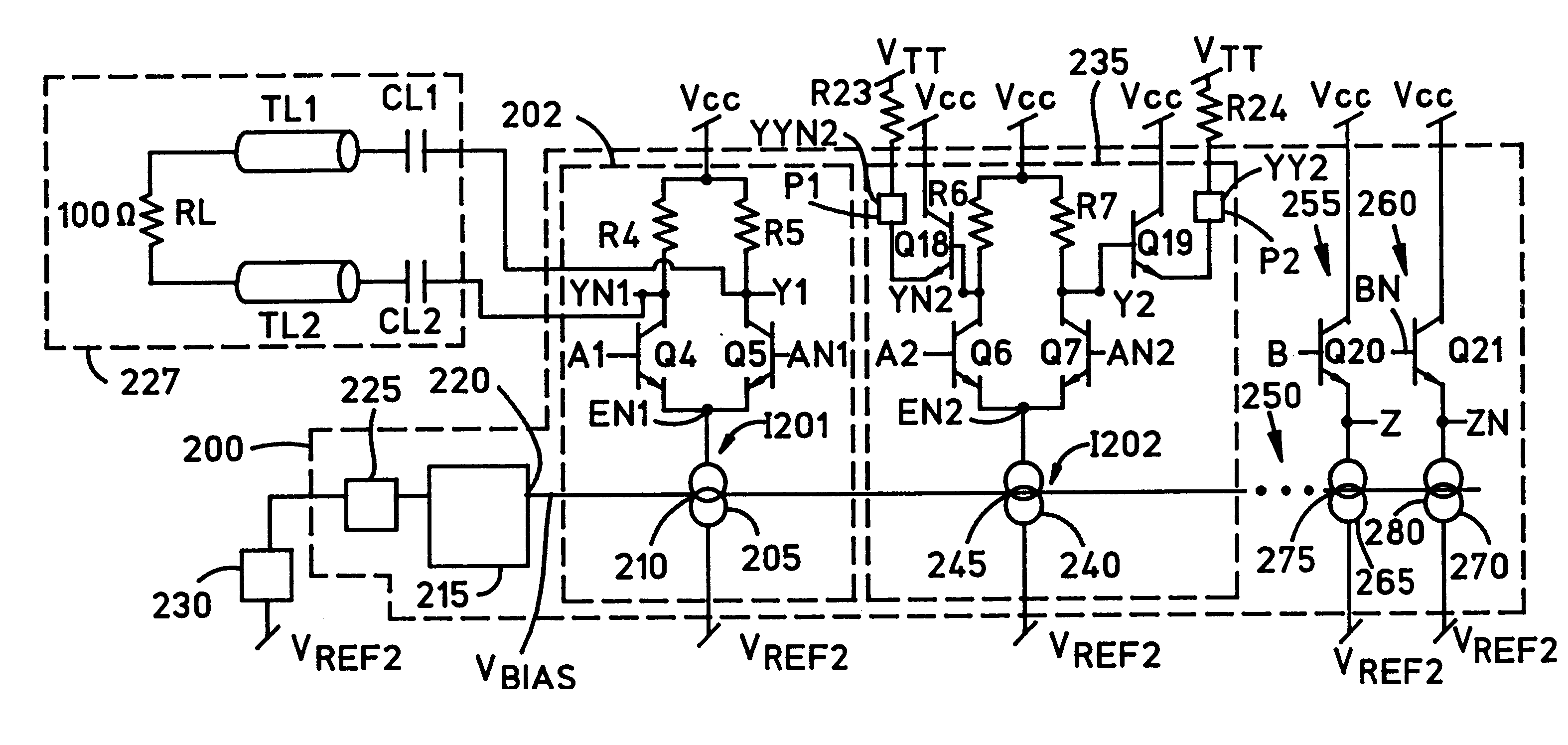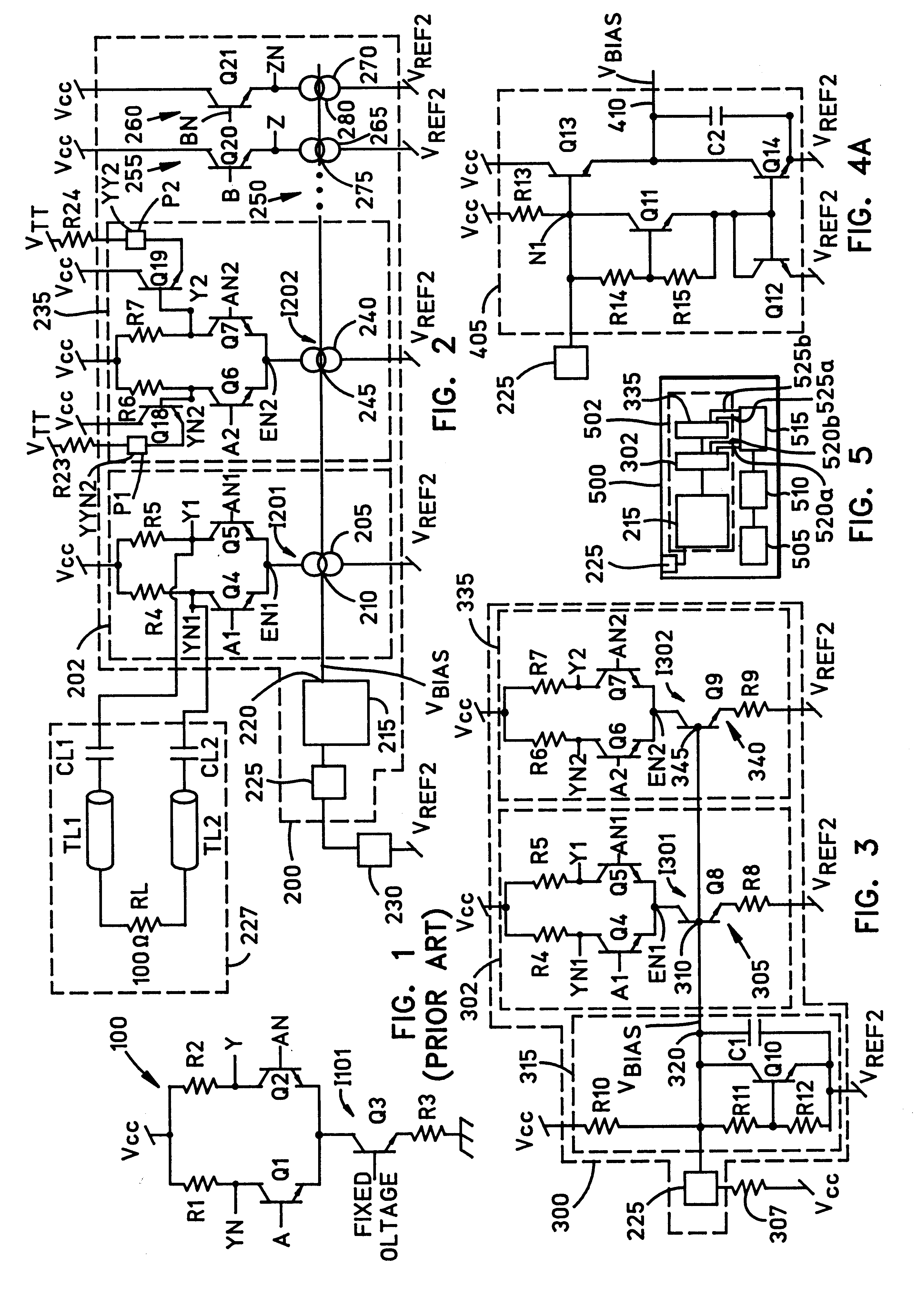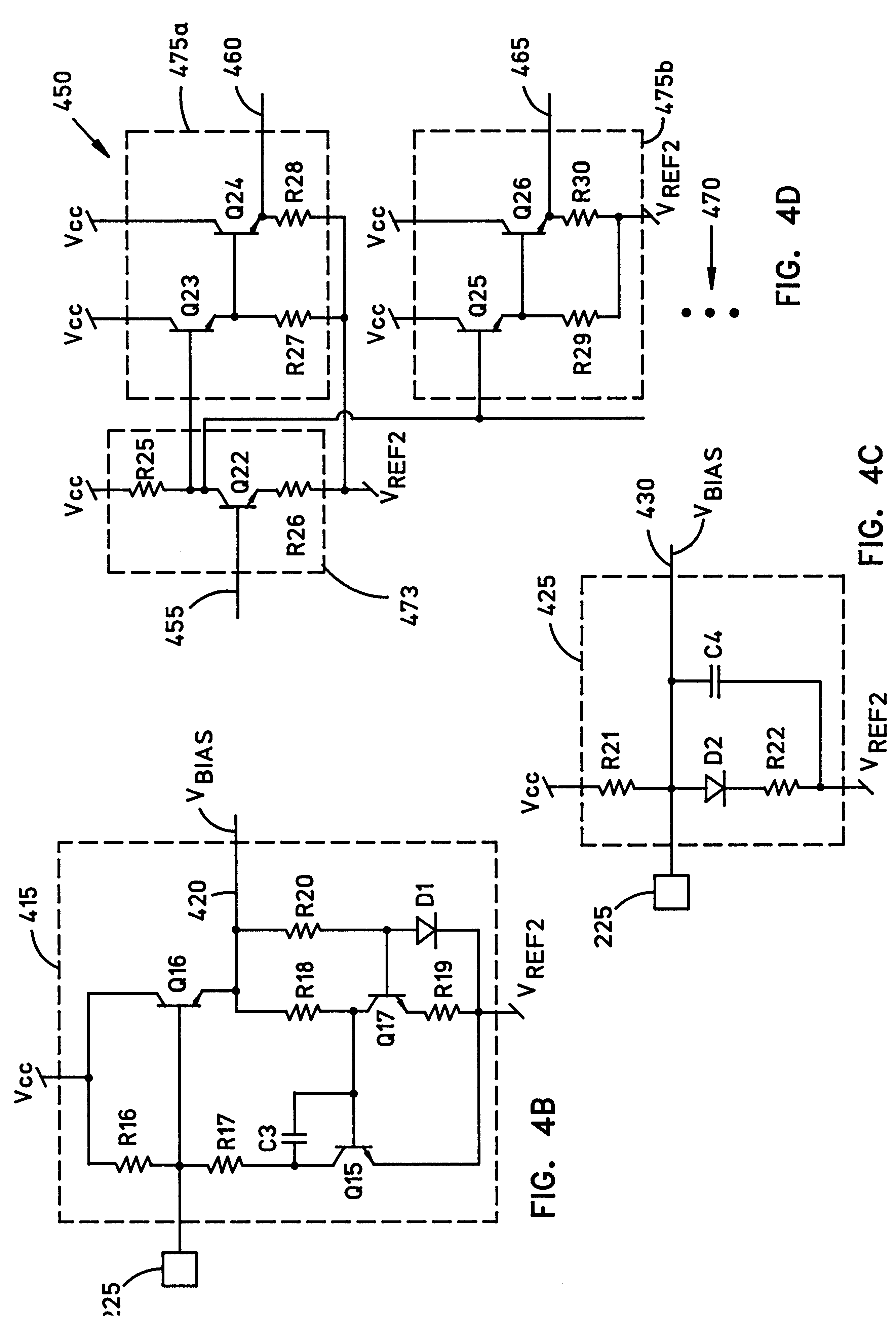Output buffer with programmable voltage swing
a voltage swing and output buffer technology, applied in logic circuits, logic circuits, logic functions, etc., can solve the problems of unnecessary power consumption and heat generation, waste of 4 ma of current for each output y and yn
- Summary
- Abstract
- Description
- Claims
- Application Information
AI Technical Summary
Problems solved by technology
Method used
Image
Examples
embodiment 405
FIG. 4A illustrates a first alternative embodiment 405 of the variable bias generator 215 of FIG. 2. This alternative variable bias generator 405 includes a variable bias generator first resistor R13 that has a first end connected to the first reference voltage, and a second end connected to the electrical connection area 225. A variable bias generator second resistor R14 has a first end connected to the electrical connection area 225. A variable bias generator third resistor R15 has a first end connected to a second end of the variable bias generator second resistor R14. A variable bias generator first transistor Q11 has a collector connected to the electrical connection area 225, a base connected to the second end of the variable bias generator second resistor R14 and to the first end of the variable bias generator third resistor R15, and an emitter connected to a second end of the variable bias generator third resistor R15. A variable bias generator second transistor Q12 has a co...
embodiment 415
FIG. 4B illustrates a second alternative embodiment 415 of the variable bias generator 215 of FIG. 2. This alternative variable bias generator 415 includes a variable bias generator first resistor R16 that has a first end connected to the first reference voltage, and a second end connected to the electrical connection area 225. A variable bias generator second resistor R17 has a first end connected to the electrical connection area 225. A variable bias generator capacitor C3 has a first end connected to a second end of the variable bias generator second resistor R17. A variable bias generator first transistor Q15 has a collector connected to the first end of the variable bias generator capacitor C3 and to the second end of the variable bias generator second resistor R17, a base connected to a second end of the variable bias generator capacitor C3, and an emitter connected to the second reference voltage. A variable bias generator second transistor Q16 has a collector connected to th...
embodiment 425
FIG. 4C illustrates a third alternative embodiment 425 of the variable bias generator 215 of FIG. 2. This alternative variable bias generator 425 includes a variable bias generator first resistor R21 that has a first end connected to the first reference voltage, and a second end connected to the electrical connection area 225. A variable bias generator diode D2 has an anode connected to the electrical connection area 225, and a cathode. A variable bias generator second resistor R22 has a first end connected to the cathode of the variable bias generator diode, and a second end connected to the second reference voltage. A variable bias generator capacitor C4 has a first end connected to the electrical connection area 225, and a second end connected to the second reference voltage. An output 430 of the variable bias generator 425 is connected to the electrical connection area 225. The output 430 is for connection to the bias voltage inputs of the current sources Adof emitter coupled ou...
PUM
 Login to View More
Login to View More Abstract
Description
Claims
Application Information
 Login to View More
Login to View More - R&D
- Intellectual Property
- Life Sciences
- Materials
- Tech Scout
- Unparalleled Data Quality
- Higher Quality Content
- 60% Fewer Hallucinations
Browse by: Latest US Patents, China's latest patents, Technical Efficacy Thesaurus, Application Domain, Technology Topic, Popular Technical Reports.
© 2025 PatSnap. All rights reserved.Legal|Privacy policy|Modern Slavery Act Transparency Statement|Sitemap|About US| Contact US: help@patsnap.com



